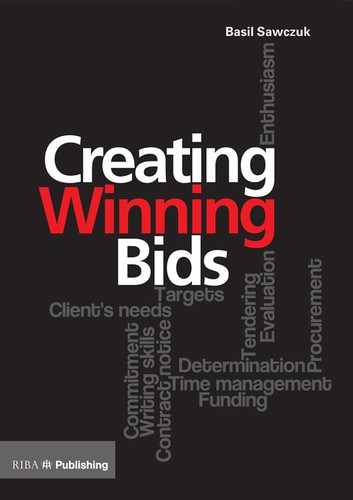Contents
CHAPTER 1 FINDING OPPORTUNITIES TO BID FOR WORK
Understanding the bidding process
Bidding through procurement agencies
CHAPTER 2 WHAT TO ESTABLISH BEFORE TENDER OR PRE-QUALIFICATION RELEASE
The need for background information
Things to know before the documentation is received
CHAPTER 3 CREDIBILITY, CAPABILITY, COMPATIBILITY AND RELIABILITY (THE 3Cs + R TEST)
Reasons why bids fail and the need to obtain feedback
How good is your relationship?
Increase your chances of success
CHAPTER 4 IMPROVING YOUR CHANCES OF SUCCESS THROUGH BETTER UNDERSTANDING OF YOUR COMPETITORS
How to win if there is a favourite
If there is an incumbent, focus on the service gap
What to do if you are the incumbent
Compare yourself to the competition
Differentiate yourself from your competitors to increase your chances of success
Differentiate through customer service
Maximising your strengths and subtly revealing the weaknesses in your competition
CHAPTER 5 PREPARATION AND PLANNING THE PROCESS
Contributors and team selection
Keep the prospective client involved
Process for preparing the document
CHAPTER 6 CREATING THE DOCUMENT
The seven-step checklist on content – the ‘must have’ elements
Step 1: Write the content to address the evaluation criteria
Step 2: Do you pass the ‘so what?’ test (all about features and benefits)
Step 3: Address all the issues the client may have
Step 4: Use the client’s language
Step 5: See your answer from the client’s point of view
Step 6: Create a reason to select your proposal
Avoid being sidetracked when writing
Patterns, signposts and bridges
Using lists, tables and graphics
CHAPTER 8 SHOWING OFF PAST PROJECTS
The need to demonstrate skills, experience and capability
CHAPTER 9 OTHER CONSIDERATIONS
Incorporating third party endorsements
